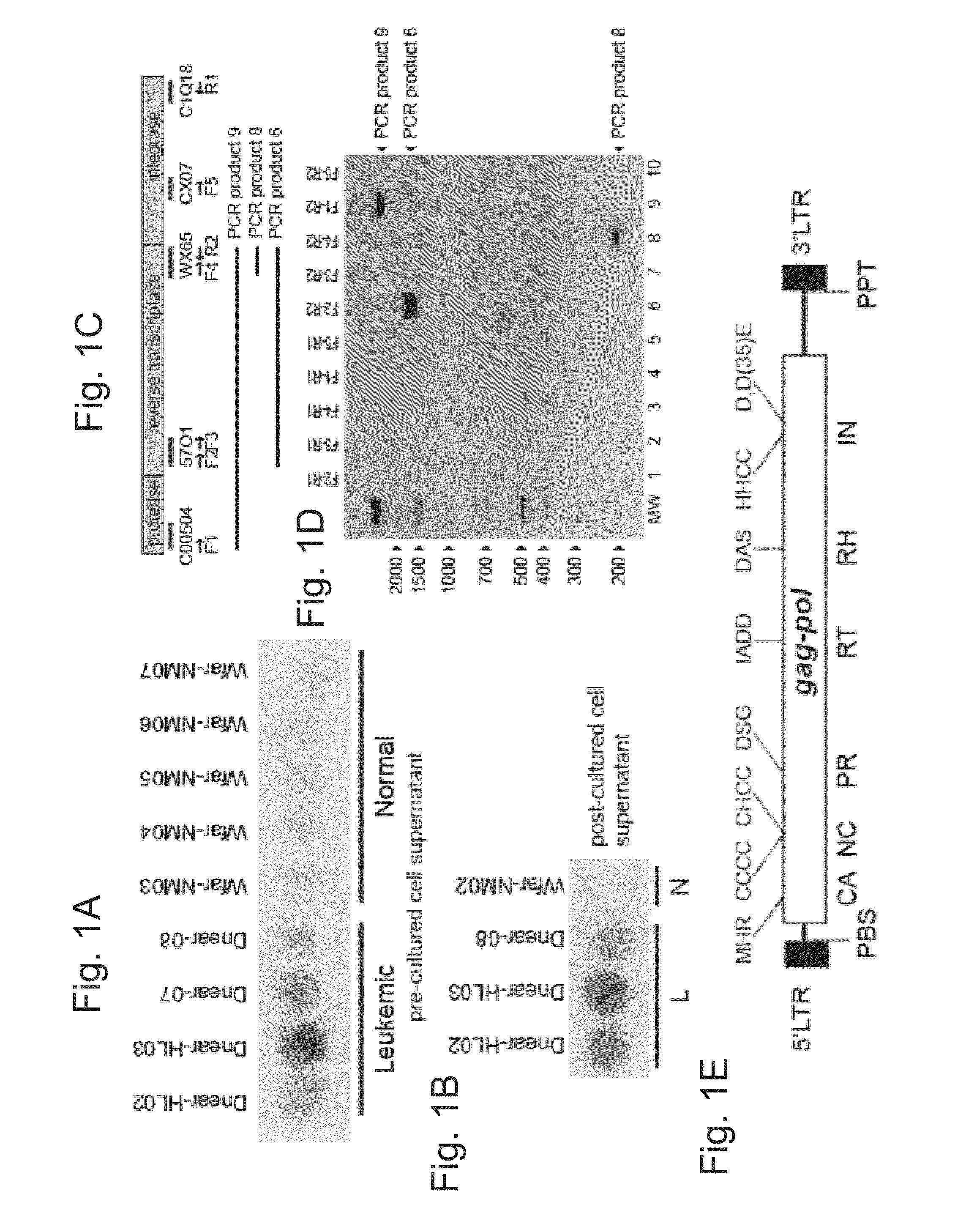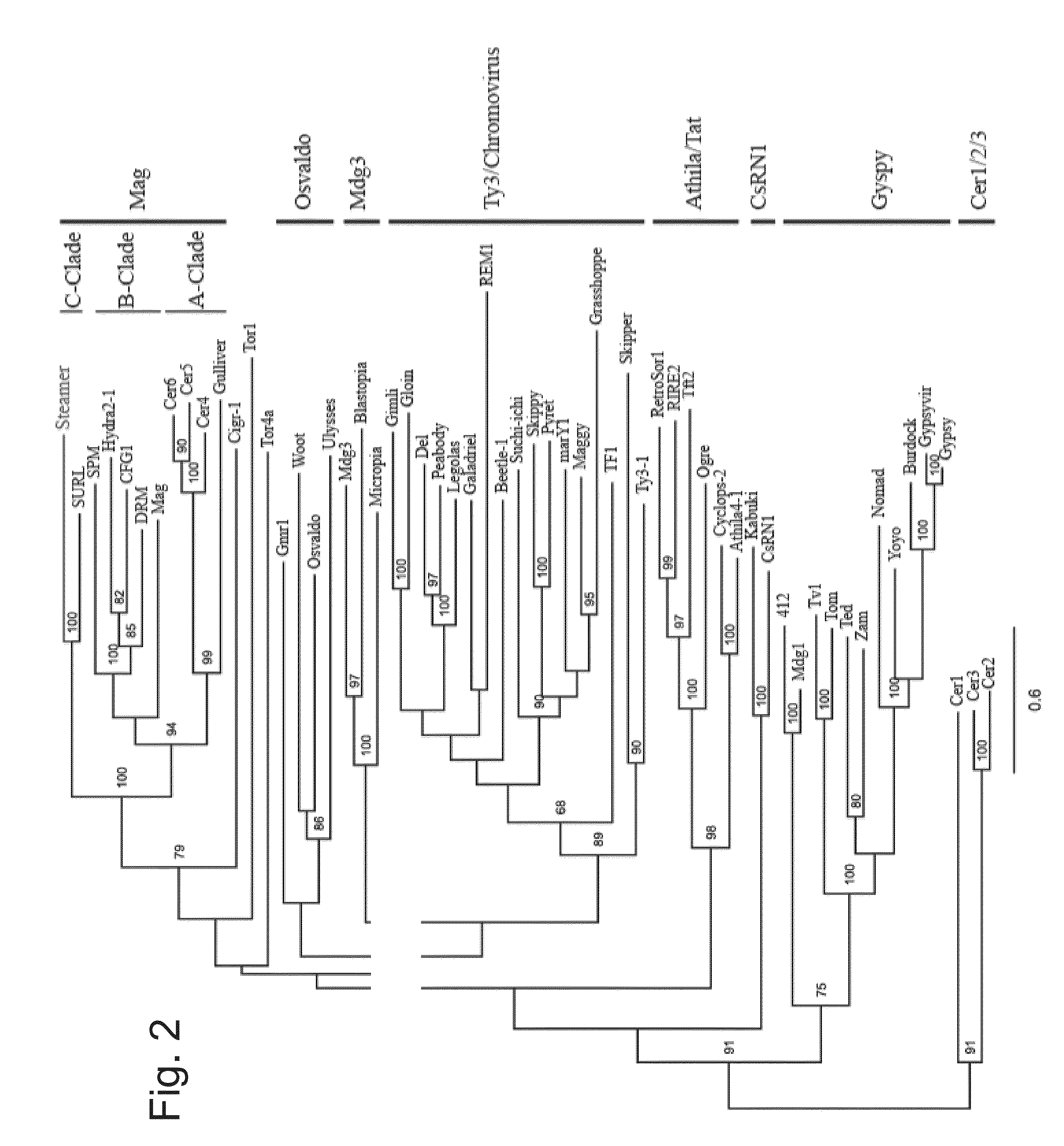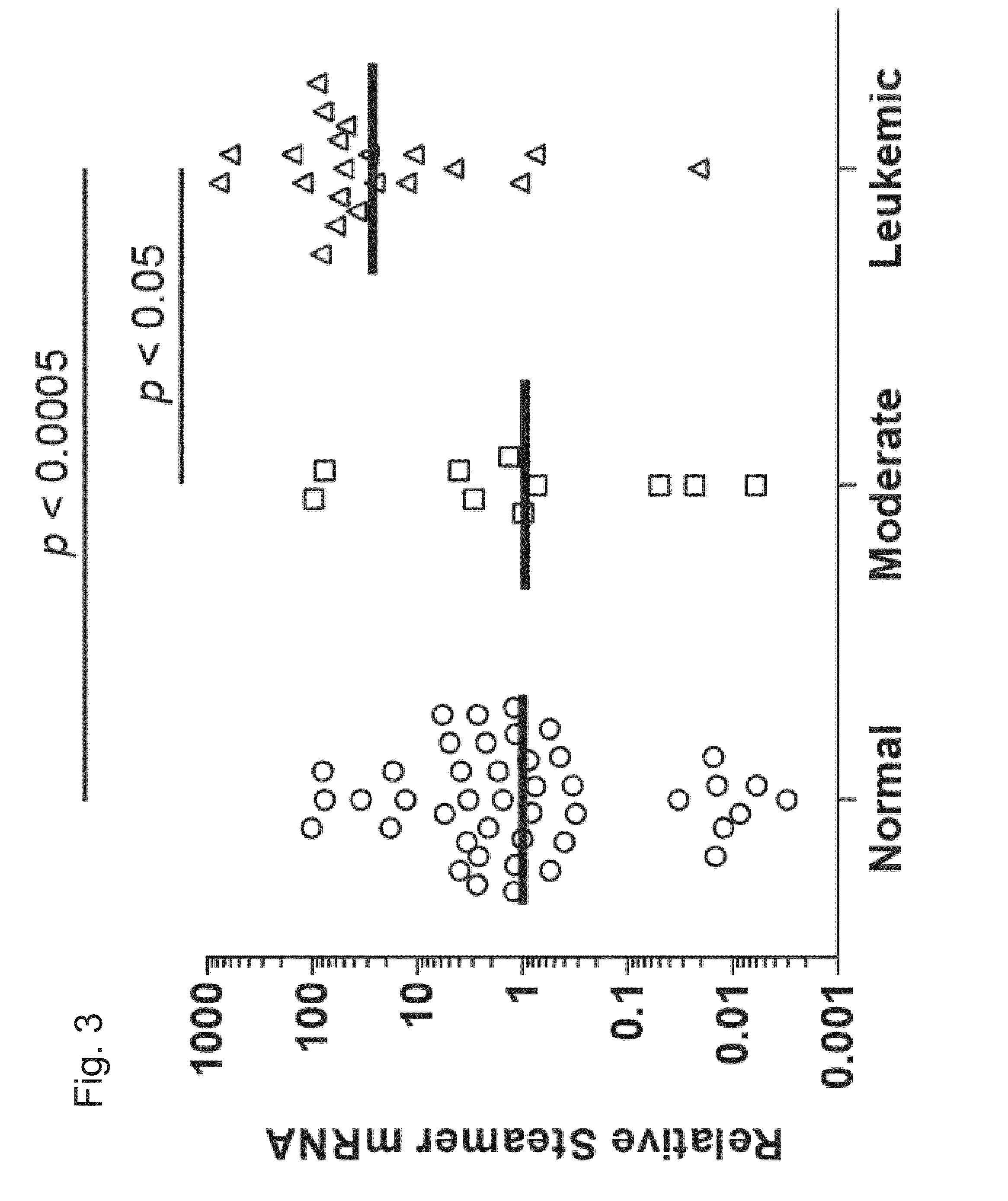Novel retroelement found in mollusks
a technology of mollusks and retroelements, applied in the field of new retroelements, can solve the problems of no viruses or retroviral sequences from leukemic clams, no large-scale inexpensive test for hn in clam harvesting, and inability to easily perform large-scale or simultaneously
- Summary
- Abstract
- Description
- Claims
- Application Information
AI Technical Summary
Benefits of technology
Problems solved by technology
Method used
Image
Examples
example 1
Mya Arenaria Collection, Diagnoses of Disease, Samples for Molecular Analysis and Hemocyte Cultures
[0187]Mya arenaria were collected and evaluated for leukemia during two surveys in 2009 and two in 2010 (n=100-150 per site per survey). The clams were dug at various high and low-intensity potato farming estuaries around Price Edward Island as previously described in Muttray et al. (2012). For a second survey in 2009 and for the 2010 surveys, sample collection transects were established through the Dunk and Wilmot estuaries (13.6-42% potato farming) from near-field, through mid-field, to far-field sites. M. arenaria were hand dug at low tide and transported to a field laboratory as previously described in Muttray et al. (2012). All samples were processed within 24 hours of collection.
[0188]Clams were screened for disease status by withdrawing 0.1 ml of hemolymph from the posterior adductor muscle in a dry sterile 1 milliliter syringe fitted with a sterile 23 gauge needle. The exterior...
example 2
Identification of a Novel Retroelement, Steamer
[0196]To identify the potential source of the reverse transcriptase activity, the cells from a diseased clam with high RT activity were cultured, total RNA isolated and 454 sequencing of cDNAs used to generate a database of approximately 200,000 sequence reads.
[0197]454 sequencing was performed by treating the RNA extracts with DNase I (DNA-free, Ambion, Austin, Tex., USA). cDNA was generated by using the Superscript II system (Invitrogen) for reverse transcription primed by random octamers that were linked to an arbitrary defined 17-mer (5′-GTT TCC CAG TAG GTC TCN NNN NNN N-3′ (SEQ ID NO: 4). The resulting cDNA was treated with RNase H, converted to double stranded DNA template using exoKlenow (NEB) and then randomly amplified by PCR, using a primer corresponding to the defined 17-mer sequence. Products greater than 70 base pairs (bp) were selected by column purification (MinElute, Qiagen, Hilden, Germany) and ligated to specific linke...
example 3
Analysis of the Steamer Element
[0204]The amino acid sequences of the conserved regions of the Gag, Protease, RT, RNase H, and IN domains of Steamer were added to an alignment of representative sequences from a database of retrotransposon sequences (Llorens et al (2011)). PhyML 3.0 (Guindon et al. (2010)) was used to generate a maximum likelihood phylogenetic tree using the LG substitution model with 100 replicates for bootstrap analysis.
[0205]The Steamer element contains a single long open reading frame (ORF) with sequence similarity to retroviral Gag and Pol proteins, flanked by 177-bp direct repeats similar to the Long Terminal Repeats (LTRs) of integrated proviral DNAs (FIG. 1E). The region of similarity to Gag includes the Major Homology Region (MHR), the most highly-conserved motif of retroviral capsid proteins (Craven et al. (1995)), and a nucleocapsid domain with two zinc fingers containing CCCC and CCHC motifs. The Pol region includes similarities to the retroviral protease ...
PUM
| Property | Measurement | Unit |
|---|---|---|
| Threshold limit | aaaaa | aaaaa |
Abstract
Description
Claims
Application Information
 Login to View More
Login to View More - R&D
- Intellectual Property
- Life Sciences
- Materials
- Tech Scout
- Unparalleled Data Quality
- Higher Quality Content
- 60% Fewer Hallucinations
Browse by: Latest US Patents, China's latest patents, Technical Efficacy Thesaurus, Application Domain, Technology Topic, Popular Technical Reports.
© 2025 PatSnap. All rights reserved.Legal|Privacy policy|Modern Slavery Act Transparency Statement|Sitemap|About US| Contact US: help@patsnap.com



